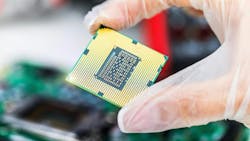Revitalizing U.S. Semiconductor Manufacturing
What you’ll learn:
- How chip manufacturing has changed.
- How did chip manufacturing migrate to different places?
- How the CHIPS Act is bringing new life to semiconductor manufacturing in the U.S.
The U.S. once dominated semiconductor manufacturing, but that was decades ago. Semiconductor manufacturing started with companies using or selling the chips they created. Mainframe companies like IBM manufactured their chips to keep the designs in-house as well as provide an edge on technology and performance. The CHIPS Act looks to bring back some of this manufacturing capability to the U.S.
Companies like Fairchild, Intel, and Texas Instruments delivered chips that engineers could use to develop their own solutions. It still required a significant investment to design and build the chips, and it worked as long as the customers could use what was produced.
Enter foundries and the fabless semiconductor companies that now dominate the semiconductor field. Chip designs are no longer coming from the foundry. The approach has been driven by cost, much like in the past. The difference is that the cost for supporting chip manufacturing can be separated from the expense of designing what’s in the chips.
U.S. Decline and Resurgence
Semiconductor manufacturing has never left the U.S. However, like many other industries, the cutting-edge implementations have migrated to other countries such as Korea, Japan, Taiwan, and China. Much of what remained in the U.S. was older technologies, where foundry costs were already amortized, and the facilities were cranking out useful products. Oftentimes, upgrading these foundries didn’t make sense when compared to new factories in other locations.
The history of the migration is long and sordid, but cost—especially labor costs—were a driving factor. Though automation has changed the impact of labor, moving production facilities or building new ones isn’t an inexpensive undertaking.
Geopolitics and supply-chain issues have come into play again. COVID highlighted the latter, but the supply chain isn’t only affected by transportation and delivery times. Second-sourcing of parts used to be a possibility for some popular commercial chips. However, the same isn’t true for high-end chips that are pushing the production technology.
Companies like GlobalFoundries, Intel, Samsung Foundry, Texas Instruments, and TSMC are taking advantage of money from the CHIPS Act to start new facilities or upgrade existing ones to deliver advanced components. This typically follows a foundry/fabless semiconductor approach that will benefit a wide array of customers and potentially provide a second source at least from a foundry perspective.
James Morra’s article about The U.S. Before and After the CHIPS Act puts many of the latest changes into context.
Contending with Chiplets and Trade Secrets
Chip manufacturing is hard, and it usually requires major startup and support costs. Facilities also involve things like trade secrets that companies want to control, as well as environmental issues that differ for each jurisdiction.
Chiplet technology is changing semiconductor chip manufacturing, too. The ability to mix chiplets from different sources using different technologies could potentially allow U.S. companies to take advantage of existing production facilities to create chiplets for use in higher-end products.
It remains to be seen if the CHIPS Act will be sufficient to jump-start high-end semiconductor manufacturing in the U.S. Or will additional incentives be needed to maintain or extend the development of new capabilities?
About the Author
William G. Wong
Senior Content Director - Electronic Design and Microwaves & RF
I am Editor of Electronic Design focusing on embedded, software, and systems. As Senior Content Director, I also manage Microwaves & RF and I work with a great team of editors to provide engineers, programmers, developers and technical managers with interesting and useful articles and videos on a regular basis. Check out our free newsletters to see the latest content.
You can send press releases for new products for possible coverage on the website. I am also interested in receiving contributed articles for publishing on our website. Use our template and send to me along with a signed release form.
Check out my blog, AltEmbedded on Electronic Design, as well as his latest articles on this site that are listed below.
You can visit my social media via these links:
- AltEmbedded on Electronic Design
- Bill Wong on Facebook
- @AltEmbedded on Twitter
- Bill Wong on LinkedIn
I earned a Bachelor of Electrical Engineering at the Georgia Institute of Technology and a Masters in Computer Science from Rutgers University. I still do a bit of programming using everything from C and C++ to Rust and Ada/SPARK. I do a bit of PHP programming for Drupal websites. I have posted a few Drupal modules.
I still get a hand on software and electronic hardware. Some of this can be found on our Kit Close-Up video series. You can also see me on many of our TechXchange Talk videos. I am interested in a range of projects from robotics to artificial intelligence.

